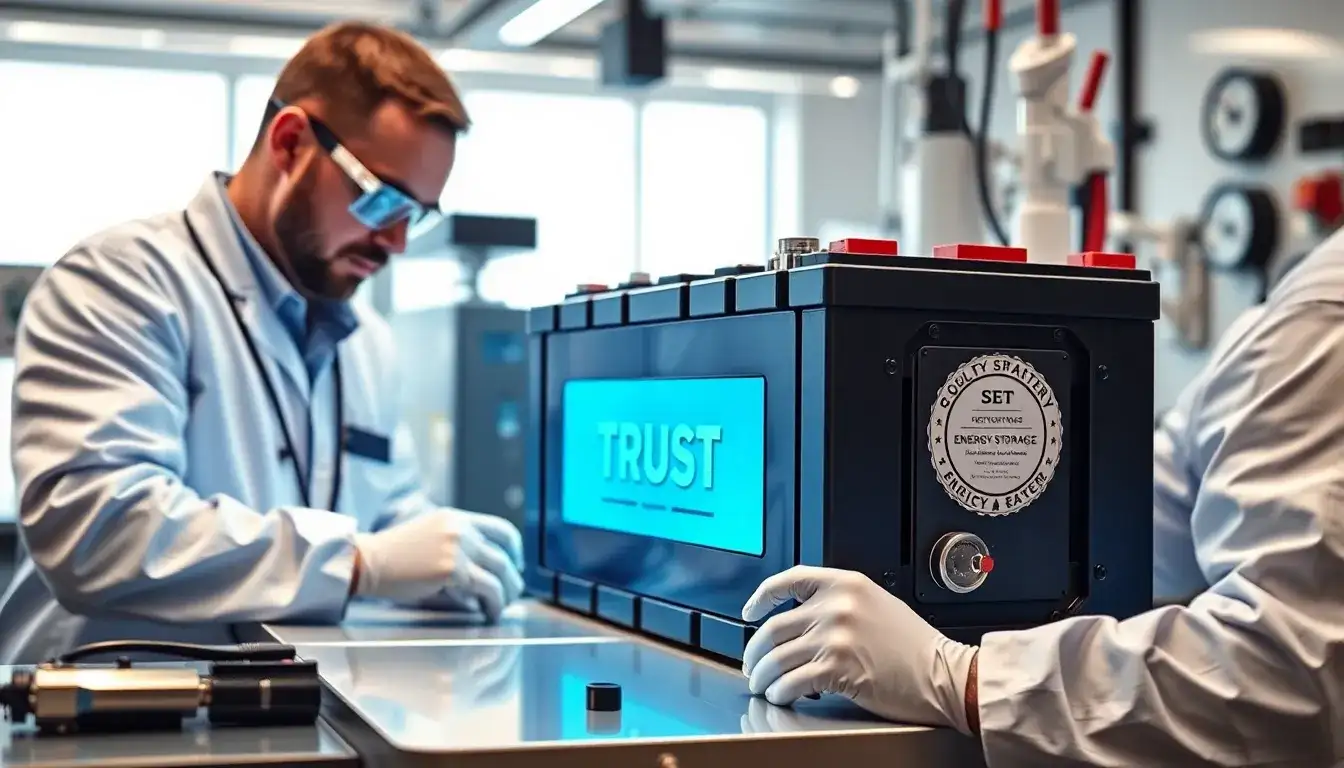
March 15 marks the annual Consumer Rights Day, a time when society emphasizes the importance of product quality. Beyond the traditional sectors of clothing, food, housing, and transportation, the emerging and increasingly vital field of energy storage has also initiated a self-examination of product quality.
Energy storage technology is a crucial aspect of the new energy revolution, playing a significant role in the energy transition. Its implications extend beyond energy safety and efficiency to sustainable development. However, as the energy storage industry rapidly evolves, certain quality issues have emerged, challenging the sector’s progress.
Performance Degradation and Maintenance Costs
Some energy storage stations experience noticeable performance degradation after a limited number of charge and discharge cycles, posing numerous challenges for long-term operation and maintenance. This performance decline not only reduces system efficiency, leading to energy waste and increased costs, but can also trigger a series of consequences such as frequent system failures and greater maintenance difficulties. Consequently, maintenance costs rise, forcing companies to allocate additional funds for routine upkeep and repairs, ultimately shortening equipment lifespan.
Limited Discharge Rates Affecting Key Applications
Certain energy storage products have relatively slow charge and discharge rates, limiting their effectiveness in applications requiring rapid power adjustments. In scenarios such as fast-charging stations for electric vehicles and smart grid regulation, energy storage systems must quickly and accurately adjust power output to meet the demands of the grid or vehicles. Slow charge and discharge capabilities diminish the practical utility and competitiveness of these systems, negatively impacting both user experience and the overall stability and reliability of the energy system.
Misrepresentation of IP Ratings and RTE
The safety protection level (IP rating) and round-trip efficiency (RTE) of energy storage devices are critical indicators of their safety and efficacy. However, some companies, driven by short-term economic gains, exaggerate product protective performance and energy conversion efficiency figures. This misrepresentation makes it difficult for customers to access accurate and reliable product information during their purchasing decisions. Such practices not only infringe upon consumer rights but also pose a significant threat to the healthy development of the energy storage industry.
Core Components Strategically Reduced, Increasing Safety Risks
To cut costs, some companies implement “strategic reductions” in core components of energy storage systems, such as battery packs, electronic components, safety protection systems, and thermal management systems, or lower their quality standards. While this may boost short-term profits, it greatly increases long-term safety risks. Under adverse conditions such as overcharging, deep discharging, circuit shorts, or extreme temperatures, these reduced energy storage systems are prone to failures, potentially leading to serious safety incidents like fires or explosions.
Repackaged Retired Batteries Pose High Risks
Some unscrupulous vendors, seeking profit, repurpose retired power batteries with minimal refurbishment for use in energy storage systems. Although this may reduce costs by approximately 30% in the short term, it harbors significant safety risks. The performance of retired batteries is substantially compromised, and their instability can easily lead to major safety incidents, such as fires when integrated into energy storage systems.
Non-Standard Wires and Cables Threaten Energy Storage Safety
The 2025 CCTV Consumer Rights Day gala exposed issues of “non-standard” practices within the wire and cable industry, with companies like Guizhou Jinmingyang Cables being highlighted. Non-standard wires and cables fail to meet national standards and infiltrate the market through improper means, jeopardizing public safety, particularly concerning energy storage stations. These cables exhibit excessive resistance, weak insulation, and inadequate sheathing, exacerbating energy loss and equipment heating, thereby increasing the risk of electrical shorts and fires. The quality of cables is directly related to the stable operation and safety of energy storage facilities.
Industry experts emphasize the urgent need to address quality issues in energy storage products, calling for close cooperation among government regulatory bodies, third-party testing organizations, and industry stakeholders. Government regulators play a crucial role in formulating and enforcing strict quality oversight policies to ensure fair market competition and protect consumer rights. Third-party testing institutions are essential for certifying and guaranteeing product quality, providing accurate and reliable performance evaluations.
Furthermore, these institutions must innovate continuously to keep pace with evolving energy storage technologies, ensuring they can accurately assess product quality and performance and support industry development. The upcoming 15th China International Energy Storage Conference and Exhibition from March 23-26, 2025, in Hangzhou, will focus on discussing the opportunities and challenges faced by the energy storage industry. It aims to share insights on sustainable development policies, market trends, and innovative solutions, fostering a collaborative environment for industry growth.
As a benchmark for high-quality development in the energy storage sector, the China International Energy Storage Conference and Exhibition has consistently promoted collaboration and innovation since its inception in 2011. This year’s exhibition will showcase cutting-edge technologies and practices in the energy storage field, facilitating communication between government and enterprises to explore new pathways for sustainable growth.







